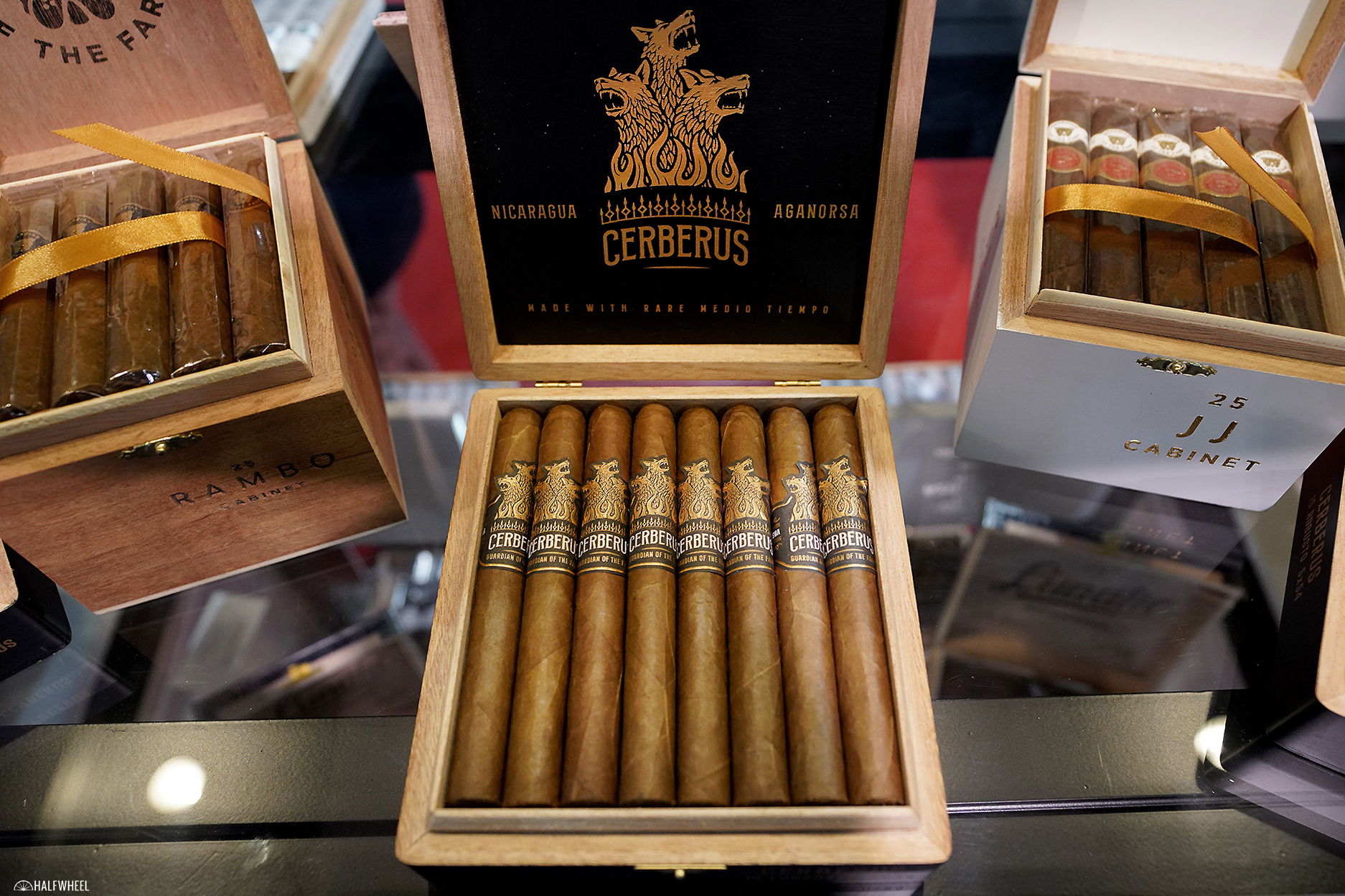I’m not sure there’s a company that’s seen the type of renaissance that seems to be happening at AGANORSA Leaf over the last few years. After many attempts at rebranding the company—formerly known as Casa Fernández—it seems like it finally figured out how to successfully complete the task. That coincided with the hiring of Terence Reilly in late 2017, a move that clearly helped the company’s relationship with its retailers beyond just Reilly’s contributions to the makeover.
At one point, many people in the cigar business likely knew the company for one of three things: a. it was owned by the same people who made cigars for other companies like Illusione, b. its owner, Eduardo Fernández, supplied tobacco to a long list of other companies; c. it made JFR, a popular value-oriented brand. But Casa Fernández made lots of other cigars and while many people had nice things to say about the cigars, those opinions didn’t seem to translate into noticeable popularity.
The issue was not a matter of notoriety, rather, it presented like a lack of excitement for the products the company sold. Sure, JFR was a good value and a great seller for retailers; but value-oriented products aren’t that exciting. Casa Fernández—the cigars called Casa Fernández—was confusing. The products were mostly branded with Casa Fernández in the name, but because they oftentimes used common cigar terms like—Reserve or Signature—it was hard to keep track of what was what.
Then, the company rebranded and began launching lines that didn’t share the Casa Fernández name —brands like Guardian of the Farm and Supreme Leaf—and the excitement levels completely changed.
The most recent of these brands is another extension to Guardian of the Farm called Cerberus. It’s a four-size line that is made entirely of Nicaraguan tobaccos, most notably a corojo 2012 wrapper. Corojo 2012 is a relatively uncommon varietal of tobacco that AGANORSA has begun using in the last year, though this is the first cigar I can think of that uses it as a wrapper.
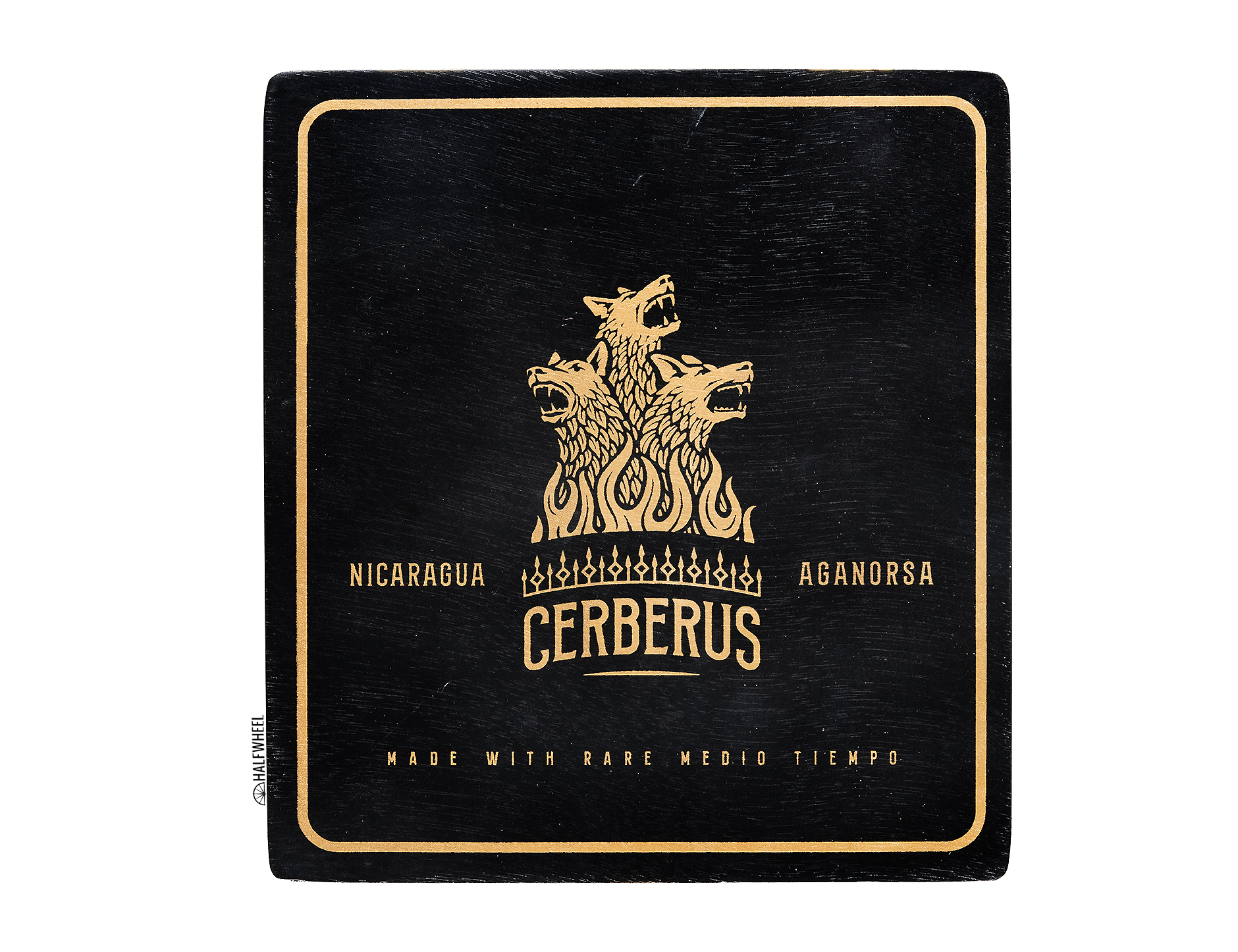
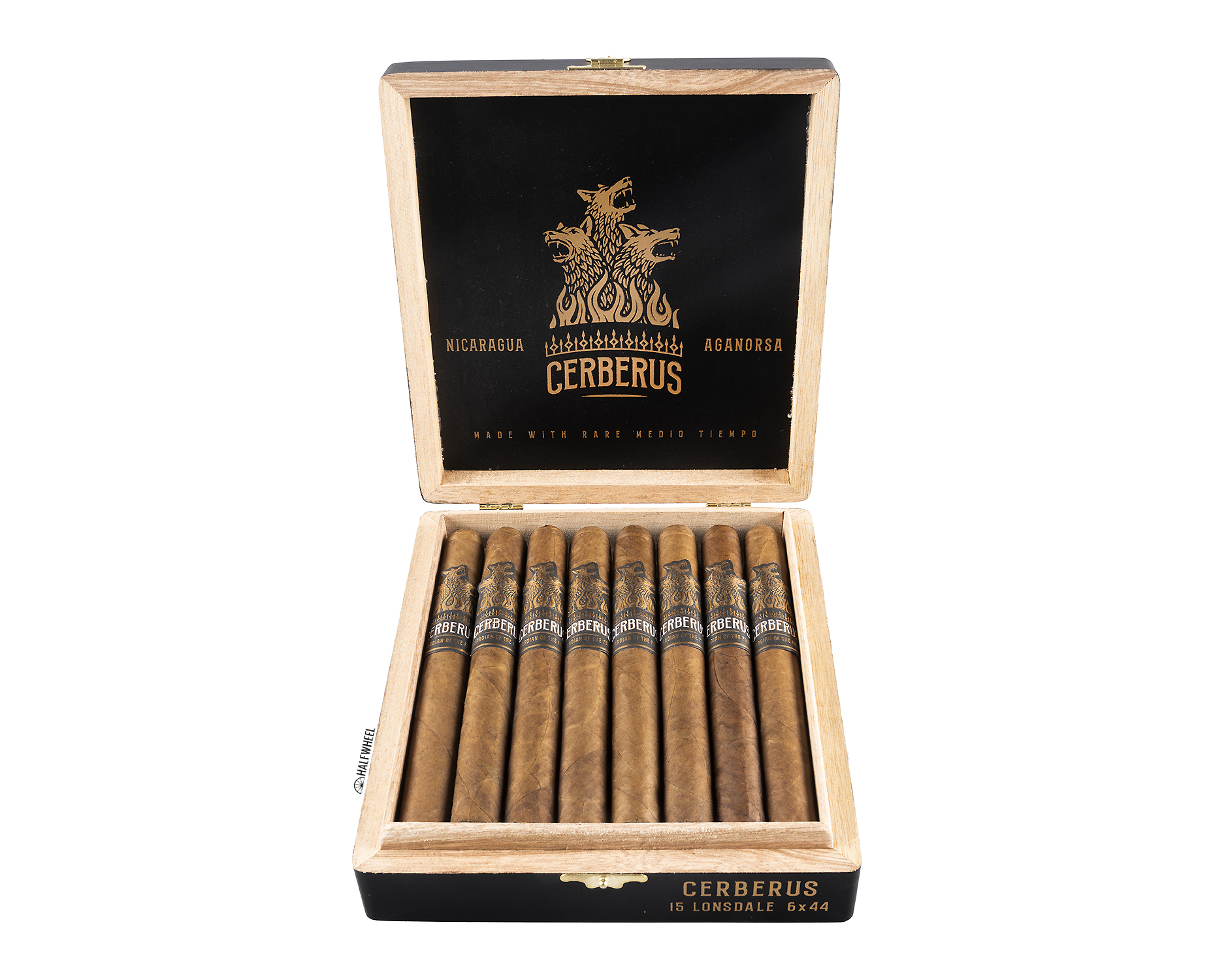
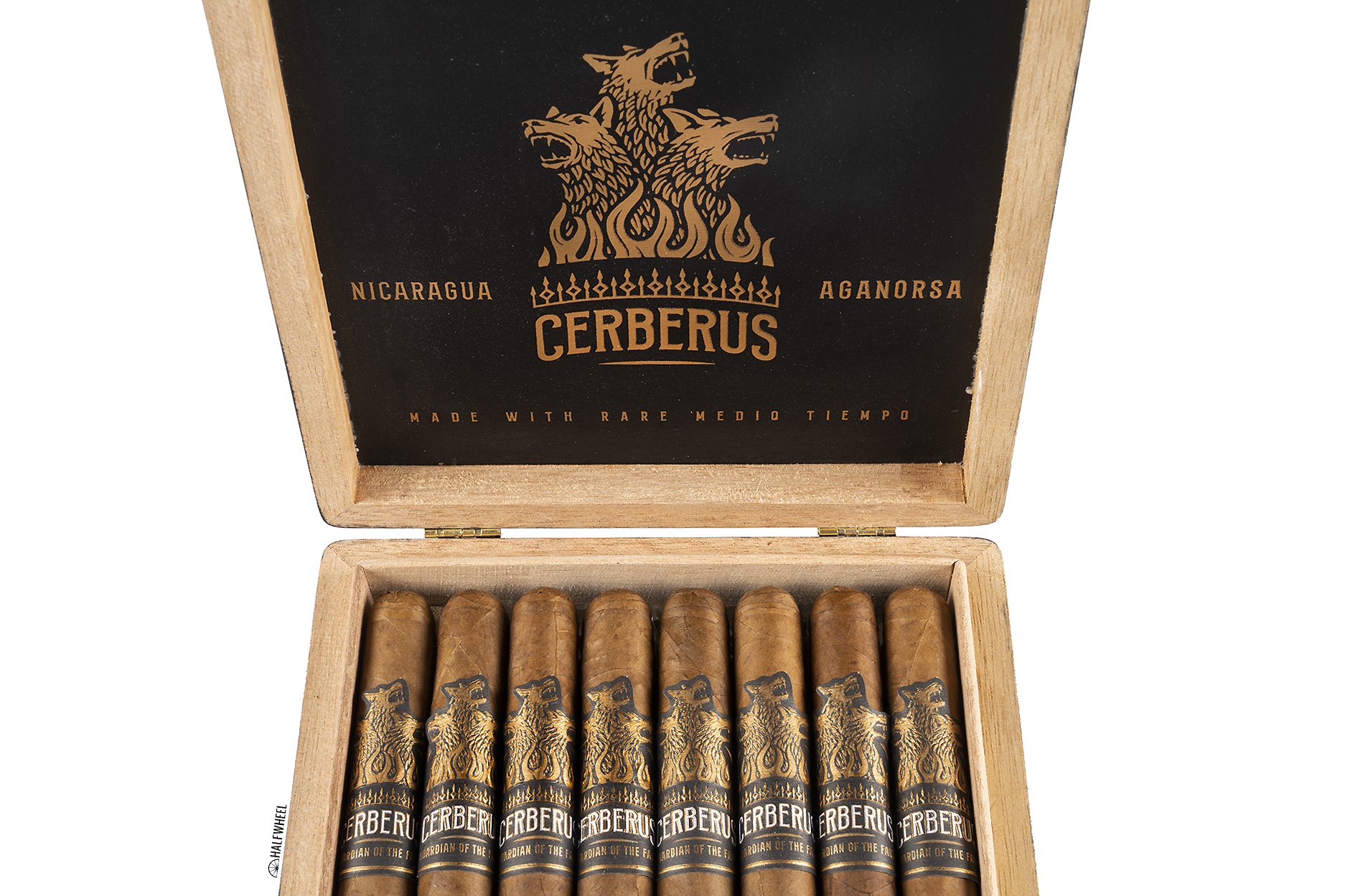
There are three regular production sizes and also a limited edition 6 x 52 toro that was used for a soft launch in November 2021 as an exclusive to Cigar.com’s Elite Advantage Loyalty Program.
- Guardian of the Farm Cerberus 6 x 52 — November 2021 — 200 Boxes of 10 Cigars (2,000 Total Cigars)
- Guardian of the Farm Cerberus 6 x 44 — February 2022 — Regular Production
- Guardian of the Farm Cerberus 5 x 54 — February 2022 — Regular Production
- Guardian of the Farm Cerberus 6 1/4 x 54 — February 2022 — Regular Production
“Corojo 2012 is going to add another level of complexity to AGANORSA Leaf’s signature flavor and aroma,” said Reilly, vice president of sales and marketing for AGANORSA Leaf, when the cigar was first announced. “We wanted to utilize it first on the Cerberus because Guardian of the Farm is the most popular with cigar enthusiasts who appreciate the nuances and characteristics of new tobaccos. We think they will be very pleased with the Cerberus.”
The Cerberus is a multi-headed dog that protects the gates of Hades to prevent the dead from leaving in Greek mythology. That image is portrayed on the band and boxes.

- Cigar Reviewed: Guardian of the Farm Cerberus 6 x 44
- Country of Origin: Nicaragua
- Factory: Tabacos Valle de Jalapa S.A.
- Wrapper: Nicaragua (Corojo 2012)
- Binder: Nicaragua
- Filler: Nicaragua
- Length: 6 Inches
- Ring Gauge: 44
- Vitola: Lonsdale
- MSRP: $9.50 (Box of 15, $142.50)
- Release Date: Feb. 22, 2022
- Number of Cigars Released: Regular Production
- Number of Cigars Smoked For Review: 3
The first thing I notice is that the sides of the band aren’t flush with the cigar, partly due to the unique aspects of this design and also probably because of the thicker paper used. I don’t really care one way or another, but I’ve smoked thousands of cigars and it’s pretty rare to see a band that doesn’t lie flush against the surface of the wrapper. Speaking of the wrapper, it’s a medium brown shade with a good amount of reds breaking through and some minor discoloration. I wouldn’t say it’s fully supple leather soft, but the wrapper is quite soft to the touch and has visible oils. The aroma from the wrapper has lots of raisins over earthiness and touches of both acidity and saltiness. It’s also nearly full, one of the stronger-smelling wrappers amongst the cigars I’ve reviewed lately. The foot takes me a while to discern: a unique green licorice flavor over raisins, gingerbread, a sour bread flavor that isn’t sourdough, and some white pepper. Cold draws have green licorice, some weird fruitiness that almost tastes a bit fried if that could possibly make sense, cocoa, leather and some acidity. One cigar has some touches of ammonia, but I, fortunately, can’t detect any on the other cigars. All three cigars have a weird tightness to the draw. It’s not plugged and it’s not necessarily tight in the traditional sense, but it’s a bit like trying to drink a milkshake through a straw that’s too small.
Unfortunately, the draw tightens up a bit more once the cigar is lit. The flavor is medium-full with lots of terroir-laden earthiness and a mild nuttiness. Despite not getting the normal volume of smoke I’d expect, there’s a nice chewy texture to the smoke. I didn’t notice any bunching issues when feeling the cigar before cutting the first cigar—and I don’t find any on the other cigars I smoke—but the draw isn’t normal. While I can’t feel the blockage with my hands, I can feel it each time I take a puff—it feels like there are parts of the cylinder that are quite restricted and it’s affecting how much smoke gets to my mouth. Unlike a plugged cigar, or even a cigar with a noticeable knot, I’m still able to get a reasonable amount of smoke in my mouth, but I have to work for it so much more than I should by both taking stronger draws and puffing quicker than normal. Flavor-wise, there’s cedar over earthiness, semi-sweet chocolate, some apple sweetness and varying amounts of black pepper. The finish has cedar, leather, saltiness, black pepper and creaminess. Retrohales aren’t that different compared to the main flavors—earthiness, cedar, leather, some saltiness—but they have a very different texture. They finish with hay, cedar, some mineral flavors and a mild sweetness I can’t fully place. Flavor is medium-full, body is medium-full and strength is medium-plus. Beyond the draw issues, each cigar needs a lot of help from the lighter to stay lit but I make it through the first third without any cigar going out, though I probably get close a few times. While the draw and ability to stay lit are problematic, the burn line is even and the smoke coming out of the foot is pretty impressive.

Each of the Guardian of the Farm Cerberus 6 x 44s I smoke goes out at some point during the second third. The first sample barely makes out of the first third before that happens, though subsequent cigars make it closer to the halfway mark, I’m guessing somewhat due to my increased attentiveness to the issues. Up until that point, a vibrant cedar flavor leads a sweet lemon flavor, earthiness and a combination of nuttiness and herbal flavors—those latter two flavors are very intertwined with one another. The finish is quite similar though earthiness leads cedar, black pepper and something that reminds me of peanut butter cookies. Like I find in pretty much every cigar, the first relight changes the profile quite a bit, but the second one is where things really start to go south. It increases the black pepper and adds a toastiness and as the issues persist, the impact of the flavor increases. Retrohales have the nuttiness slightly edging out earthiness and then allspice, cloves and black pepper serve as secondary flavors. Those retrohales show a lot more toastiness and black pepper—I’m not sure if that’s a direct result of the relight—but there’s still earthiness and that interesting nutty-herbal combination. Flavor is medium-full or full depending on the cigar, while body and strength are pretty consistently medium-full.
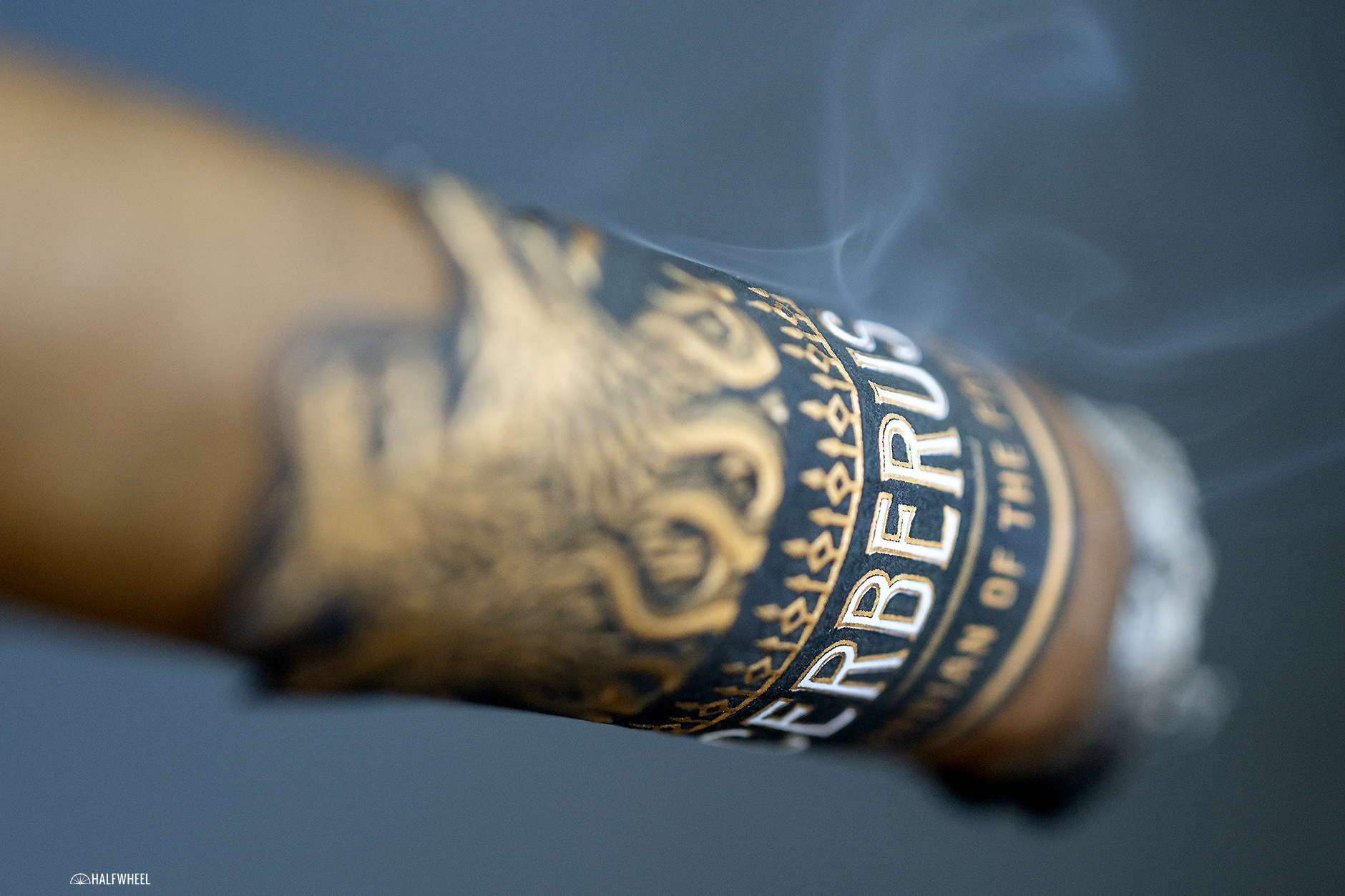
I try my best to keep the cigars lit for a number of reasons, but there’s an added concern for the Cerberus. It seems like after the third or fourth relight—never a good sentence to write—some tar-like flavor begins to creep into the profile. What’s interesting is that there’s zero tar to be found on the caps of the cigar. Regardless of whether or not I can see it, I find tar to have an incredibly distinct flavor—it reminds me of a burnt butter-based sauce with some added metallic flavors—and I can taste it creeping into the profile. Fortunately, it’s not present on every cigar and it’s mild when it shows up, though very noticeable. Once again, the flavor profile really depends on how many times I’ve had to relight the cigar, but at best cedar is level with the toastiness and black pepper; at worst, it’s tough to taste much beyond the latter two flavors. There are also times when I can pick up earthiness and white pepper, but it’s not consistent. The finish sees the black pepper come alive to dominate cedar, creaminess and leather; though one sample has some white pepper as well. Retrohales have cedar, earthiness, fruitiness, black pepper and a sweet spiced rum flavor. They finish with black pepper, red pepper and toastiness dominating some earthiness. Flavor is full, body is full and strength is medium-full. While the construction woes continue, two cigars see their draws get back to normal levels and the smoke production comes alive. Unfortunately, by this point of the cigar, it’s very much too little, too late.
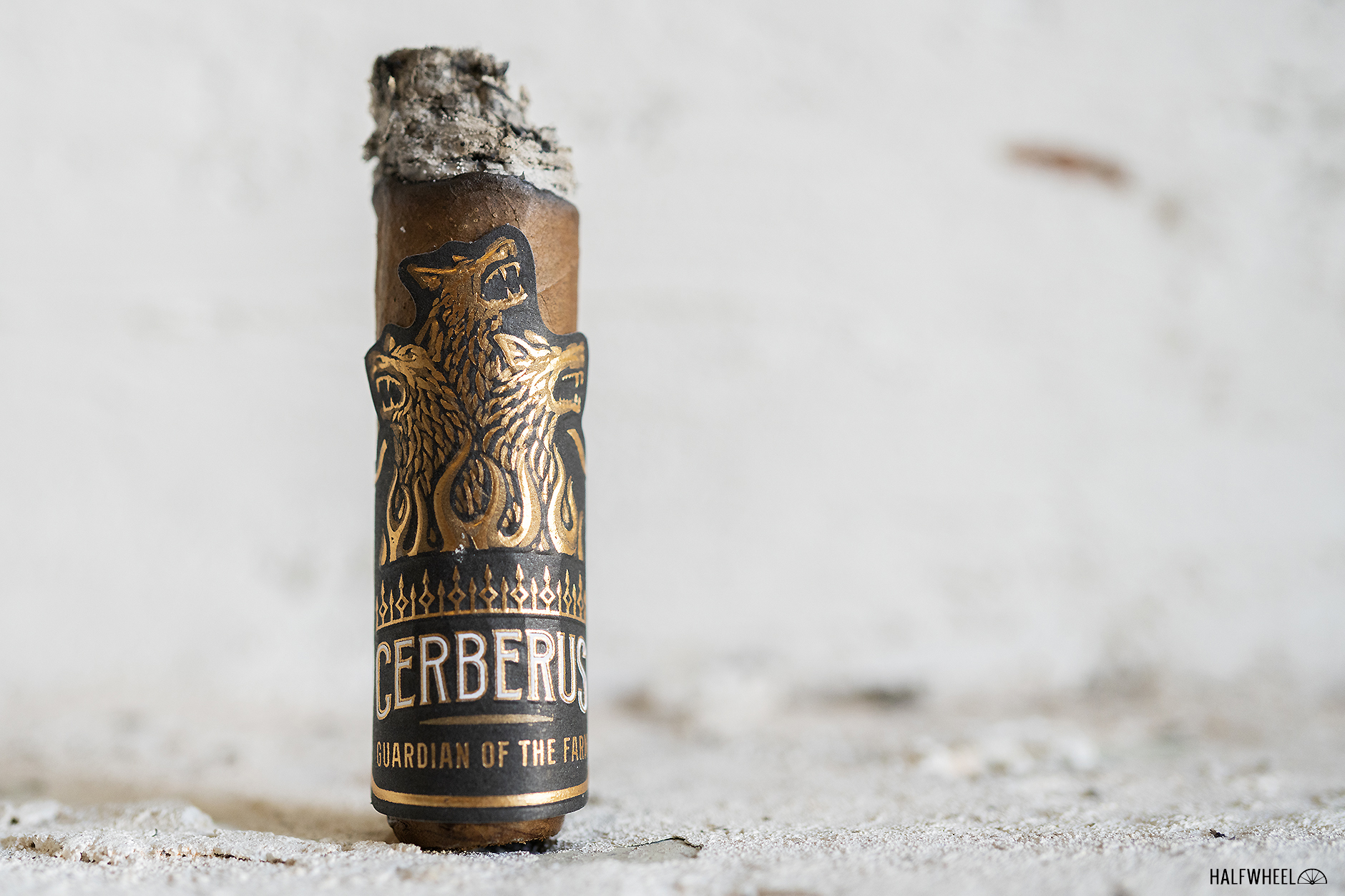
Final Notes
- I ended up smoking three and a half cigars for this review. The third sample was lit up, but I got distracted and the cigar went out. I wasn’t sure if this was due to me or the cigar’s burn issues, but I felt like it could have been my issue. I discarded the cigar and the score and ended up lighting up a fourth sample for the review. The score is only based on the three samples, though I’m not sure how much it would have mattered had I kept smoking the third cigar given the burn and draw issues. I’d say the third sample was pretty much mirroring the second sample up until that point.
- If I was asked to name one factory whose quality has struggled over the last year, it troubles me to say Tabacos Valle de Jalapa S.A. is the first one that comes to mind. While the factory has put out some excellent cigars of late—Patrick scored the Supreme Leaf Torpedo a 93 in January—there are three boxes of cigars we’ve purchased in the last year that stand out as signs the quality control is not what it once was. This box of Cerberus is troubled, we purchased a box of PIV Robustos where the cigars didn’t find in the box in a manner that I can’t really recall seeing before and then there was a box of Illusione TAA 2021s where the box contained a mixture of shapes ranging from round to box-pressed.
- A large part of the disappointment is that TABSA is a factory that is beyond capable of producing world-class cigars; it’s won our factory of the year award multiple times and has been a finalist for the award in other years. It would come as no surprise to see TABSA with multiple cigars on our 2022 Top 25 list, but the distribution of its total scores for the factory throughout the year is going to be interesting to view.
- While I think construction issues have increased across the board due to increased production and COVID-19 related issues, I suspect they are going to be more problematic for Nicaragua and the source of those problems isn’t because of factory owners not caring. Nicaragua is experiencing massive migration issues and it’s only increasing. I’m not an expert on the issue, but it should be noted, this isn’t simply due to COVID-19 or anything else in the last couple of years. The exodus of Nicaraguans out of the country intensified after its political crisis in 2018—an estimated 62,000 people left in one year—and those factors haven’t gone away.
- The emigration out of Nicaragua and the issues with COVID-19, combined with the massive increase in cigar exports in 2020-2021 have led to major labor issues for cigar factories in Nicaragua and many experienced workers are leaving, sometimes with no one to replace them according to what I’ve been told by many factory owners in Nicaragua.
- I suspect that if we reviewed more cigars from Nicaraguan factories, we’d find increased quality control issues with many, if not most of them.
- In a very weird twist of fate, while many Nicaraguans are leaving the country, there’s an uptick in Cubans immigrating to Nicaragua. Many of them are doing it so they too can attempt to immigrate to the U.S., but I suspect there are people leaving Cuba and ending up in cigar factories in Estelí.
- Further adding to the frustration with this cigar is that the tobacco itself tasted very good, one of the cleaner tasting AGANORSA cigars I’ve smoked in quite some time, but only to a point. There comes a time when pretty much any cigar that experiences the need for this many relights and touch-ups—combined with the draw issues—is going to get back to this generic pepper-laden toasty profile that overwhelms most of the rest of the flavors. I feel quite strongly that the tobaccos I smoked would have tasted good if they had been bunched properly.
- The first sample had the tar flavor develop towards the end of the first third. What’s odd is that it wasn’t consistent and would disappear for five minutes and then return. Fortunately, it remained a very mild flavor.
- I’ve smoked a few cigars where I’ve tasted tar and not seen any. Even if it wasn’t tar that I was tasting, I still have issues with the cigar.
- I am not sure I’ve ever experienced any cigar band—specifically the paper part—that was as challenging to remove as this one. Sliding the band off went fine though that always risks damaging the wrapper, trying to undo the part where the band is glued didn’t work, and tearing the band was legitimately challenging for a piece of paper. The band is very thick and its pliability was challenging.
- As frustrating as I found the band to remove, I think it highlights the difference with AGANORSA Leaf’s approach to branding compared to the Casa Fernández days. Five years ago, this cigar would have used the same basic packaging as the regular Guardian of the Farm but with some added secondary band or ribbon. Now, it looks like a completely different product.
- AGANORSA Leaf advertises on halfwheel.
- Cigars for this review were purchased by halfwheel.
- Final smoking time ranged from just under two hours to two hours and 30 minutes. This variance seemed related to the draw and when the relights started.
- Site sponsors Atlantic Cigar Co., Cigar Hustler and Famous Smoke Shop carry the Guardian of the Farm Cerberus 6 x 44.
The Guardian of the Farm Cerberus 6 x 44 was frustrating. While I didn’t try lighting up every cigar in this box, the four that I did all suffered from some weird draw issues and it certainly impacted both what I was able to taste and my feelings about the cigar. I’m not sure how much stock I’d place in this review unless you are curious to know what the lonsdale version of the Cerberus tastes like when it’s not bunched properly, but I can only write about what I experienced and not what I think might happen in an alternate world.


